
Theater Koblenz
The extensive renovation of the Theater Koblenz comprises an interior renovation and redesign of significant parts of the theatre's backstage elements. Working within the boundaries of the existing building, the project carefully balances the many complexities of the brief: heritage preservation is considered alongside necessary technical upgrades and a roof renovation. In addition, the façade of the operations building on Clemensstraße will be redesigned to give this backstage entrance a modern, expressive appearance that announces it as an integral part of the theatre complex while clearly distinguishing it from the theatre's historic visitor entrance. With the renovation preserving a large part of the building for further use, and using bio-based materials as much as possible, the carbon emissions for the Theater Koblenz will be lower than for a comparable renovation.
- Location
- Koblenz, Germany
- Status
- In progress
- Year
- 2022–
- Surface
- 9500 m²
- Client
- Stadtverwaltung Koblenz
- Programmes
- Offices, Theatre, Cultural, Auditorium
- Themes
- Public, Sustainability, Transformations, Culture
Built in 1787 and last renovated in the 1980s, the theatre presents a grand classical façade towards Koblenz's Deinhardplatz. Behind the scenes, however, is a different story: over the years, the complex was extended a number of times, and today many of the theatre’s functional areas – offices, dressing rooms, rehearsal rooms, workshops, lounges – are housed in several outbuildings connected to the historic theatre. A substantial part of these operational spaces are located on Clemensstraße. This building does not make the theatre visible to the outside world as an important modern cultural institution, and does not provide adequate working conditions for the theatre’s staff.
MVRDV’s design responds to this situation by making the most significant changes where they are most needed. In the front of house, the design combines a renovation of the historic architecture – in keeping with the preservation requirements – with the modernisation of the technical equipment. The building on Clemensstraẞe will be completely renovated inside and the façade will be entirely renewed in order to highlight the building’s function as part of the theatre, as well as to make the pride and enthusiasm of the people who work for the theatre visible to the people outside.
Large windows are opened in the ground floor to allow passers-by a glimpse of the activities inside, while the existing façade of the building is replaced by recycled aluminium panels, as a reference to the materials used backstage in a theatre. The different functions of each space are indicated by the variety of aluminium profiles, with each different pattern or orientation of the panels’ folds representing a different part of the building’s programme. In addition to coloured blinds, large, brightly lit letters are placed on the façade to further communicate the purpose of the building.
The design also renovates all of the theatre’s roofs, making use of recycled materials to reduce the carbon emissions of the project. In an additional sustainable measure, the design team was able to integrate photovoltaic panels across the complex, a challenging task considering the building’s heritage status. Through careful study, these solar panels are added in a way that cannot be seen from street level, preserving the historical appearance of the building.
“In the past, going to the theatre was largely about grandeur, about the excitement of visiting these big, fancy buildings,” says Jacob van Rijs, founding partner of MVRDV. “In this experience, the dichotomy of the ‘front of house’ and ‘back of house’ helped to obscure another ingredient of the experience: the people who made the productions. Koblenz was a perfect example of this, where visitors enjoyed the neoclassical façade while the production crew were forced to go to extreme lengths just to get some fresh air. With our renovation, we elevate this aspect of the theatre so the staff can be proud: ‘here we are, and we hope you enjoy our work.’”
Gallery
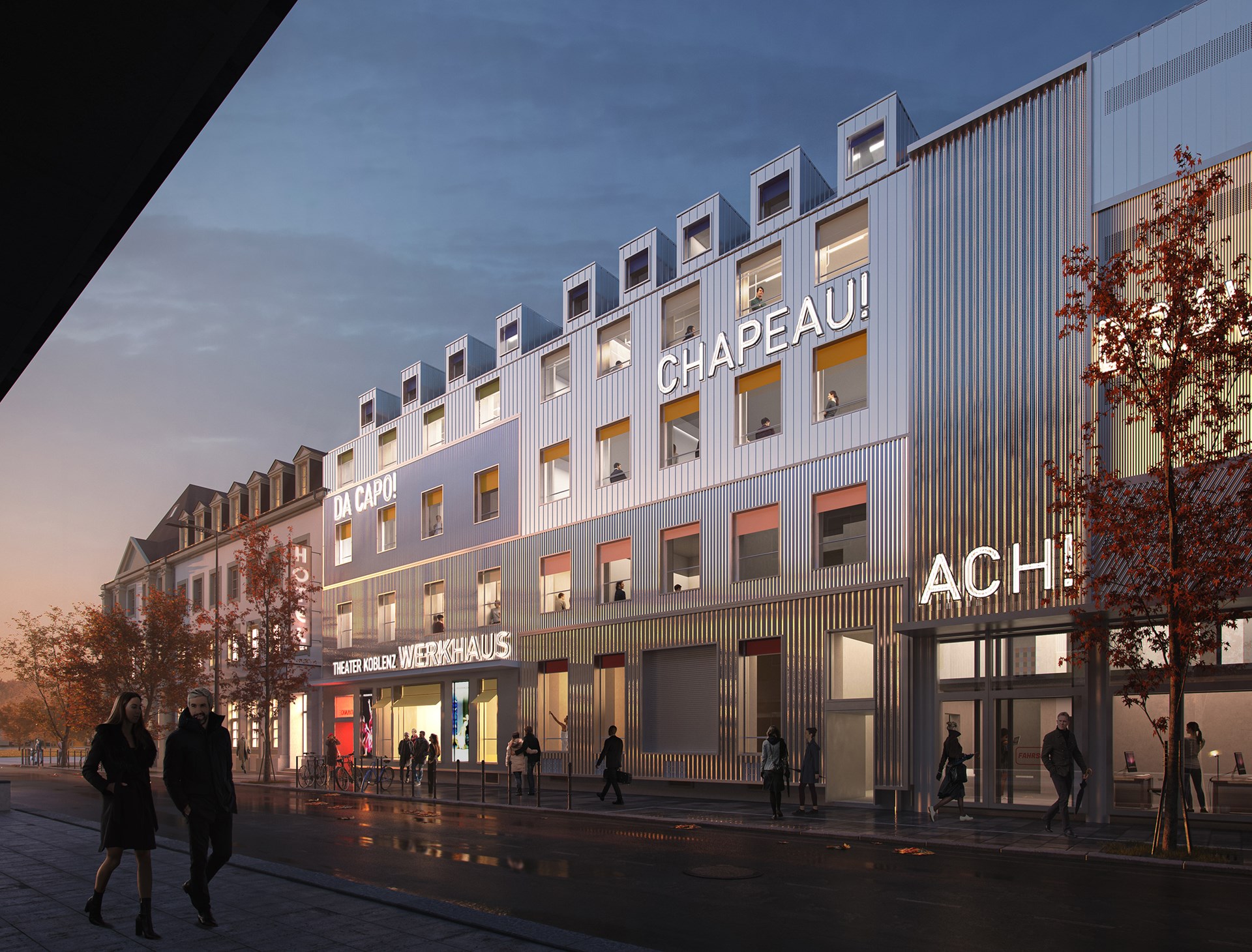
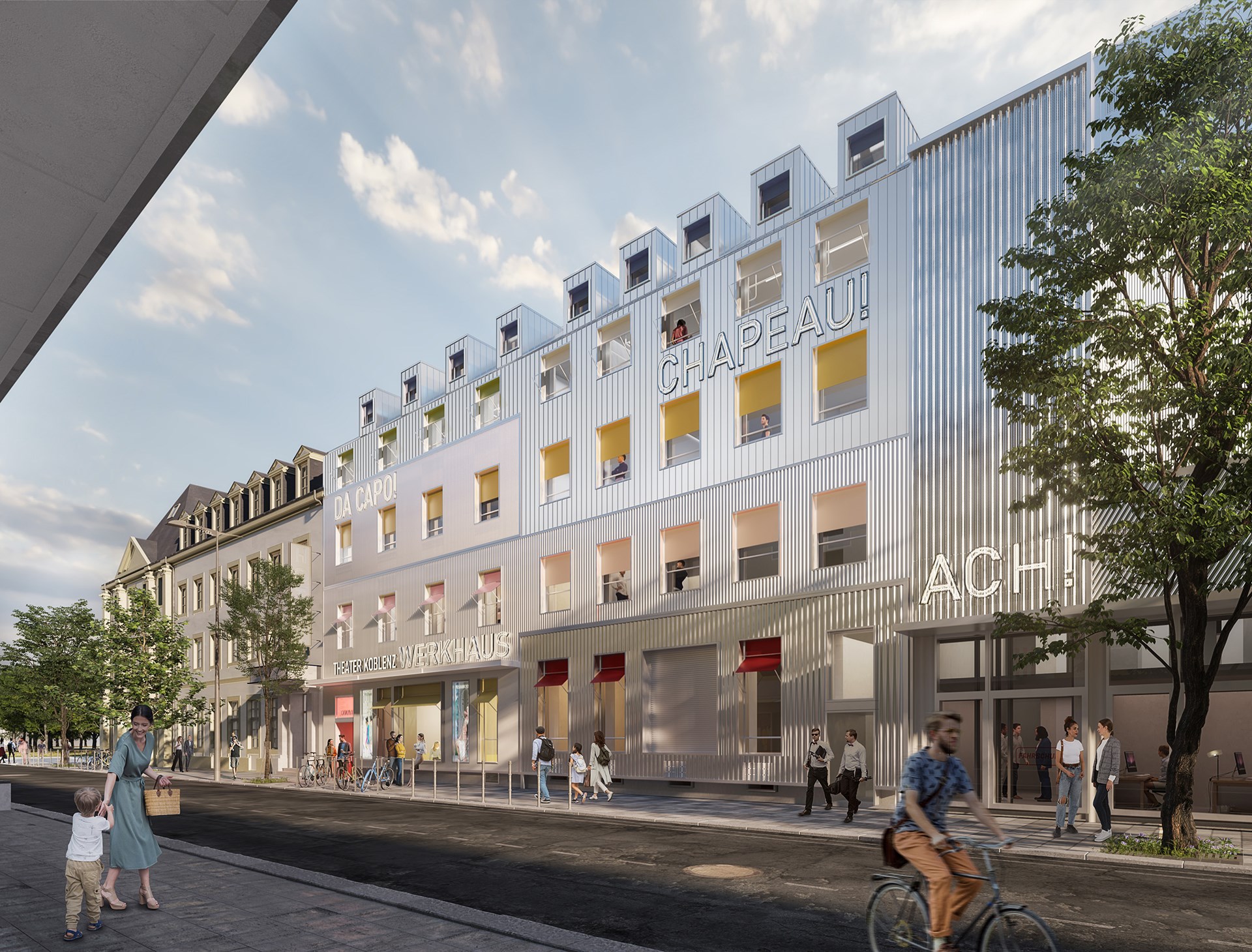
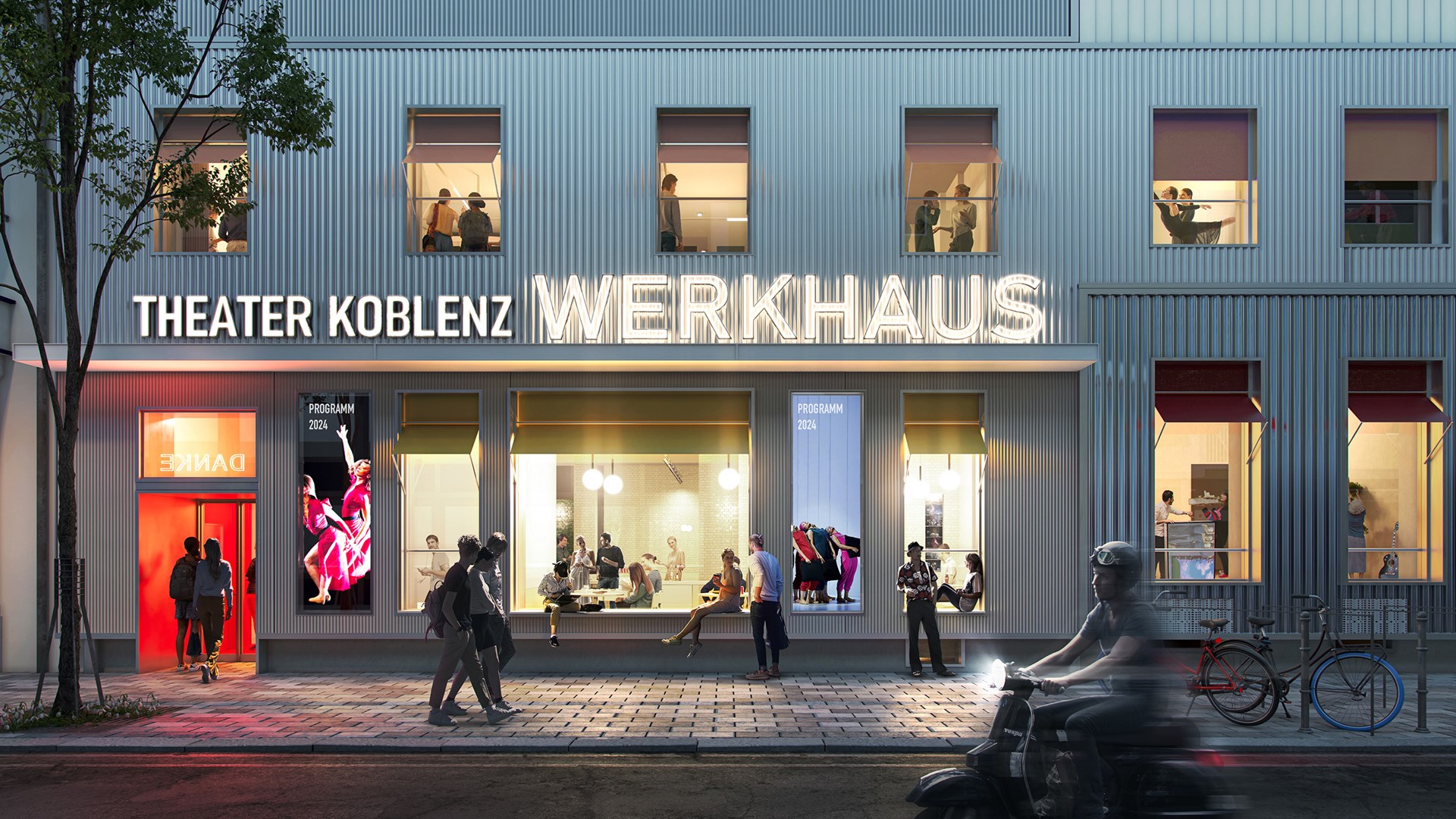
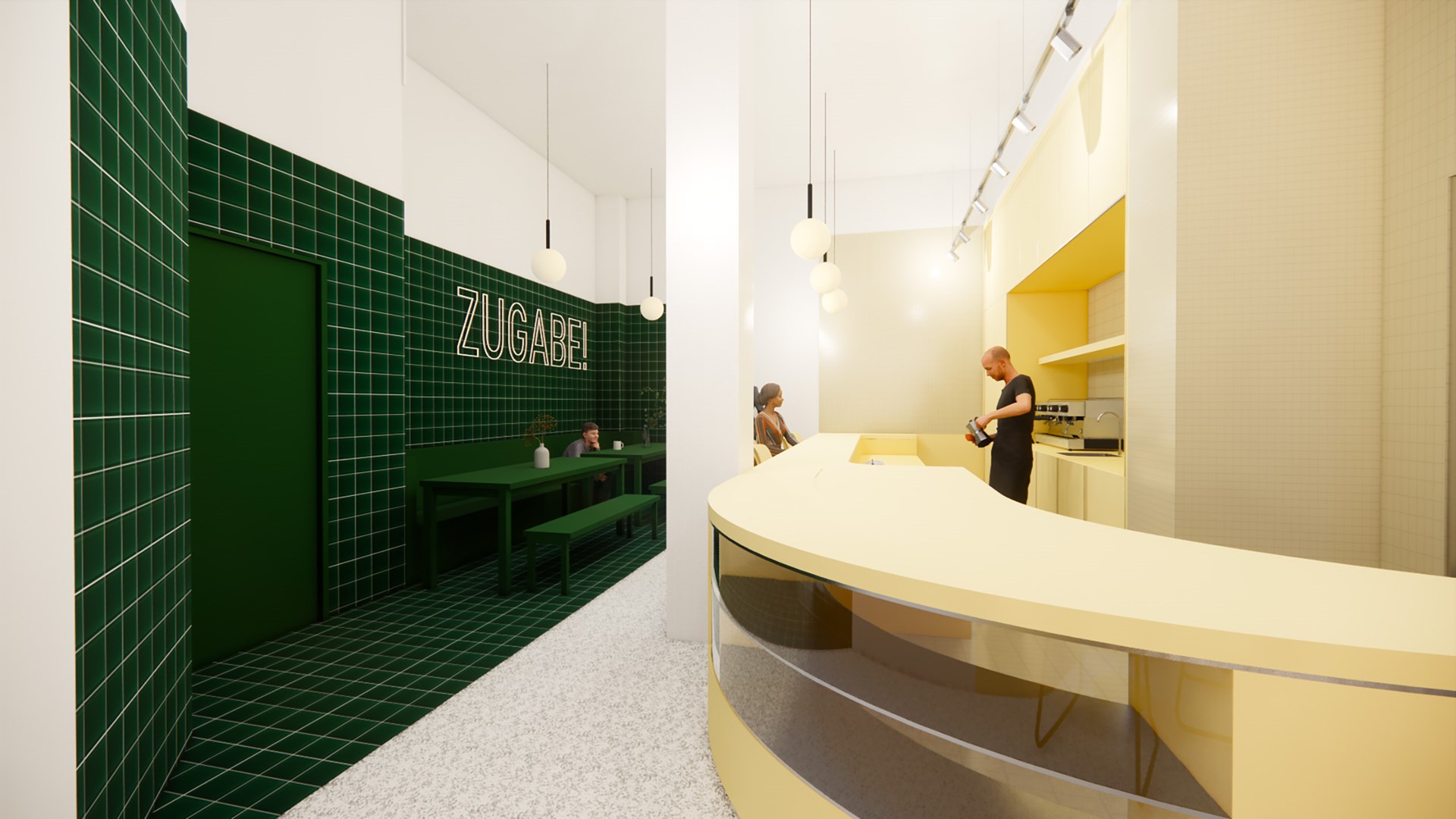
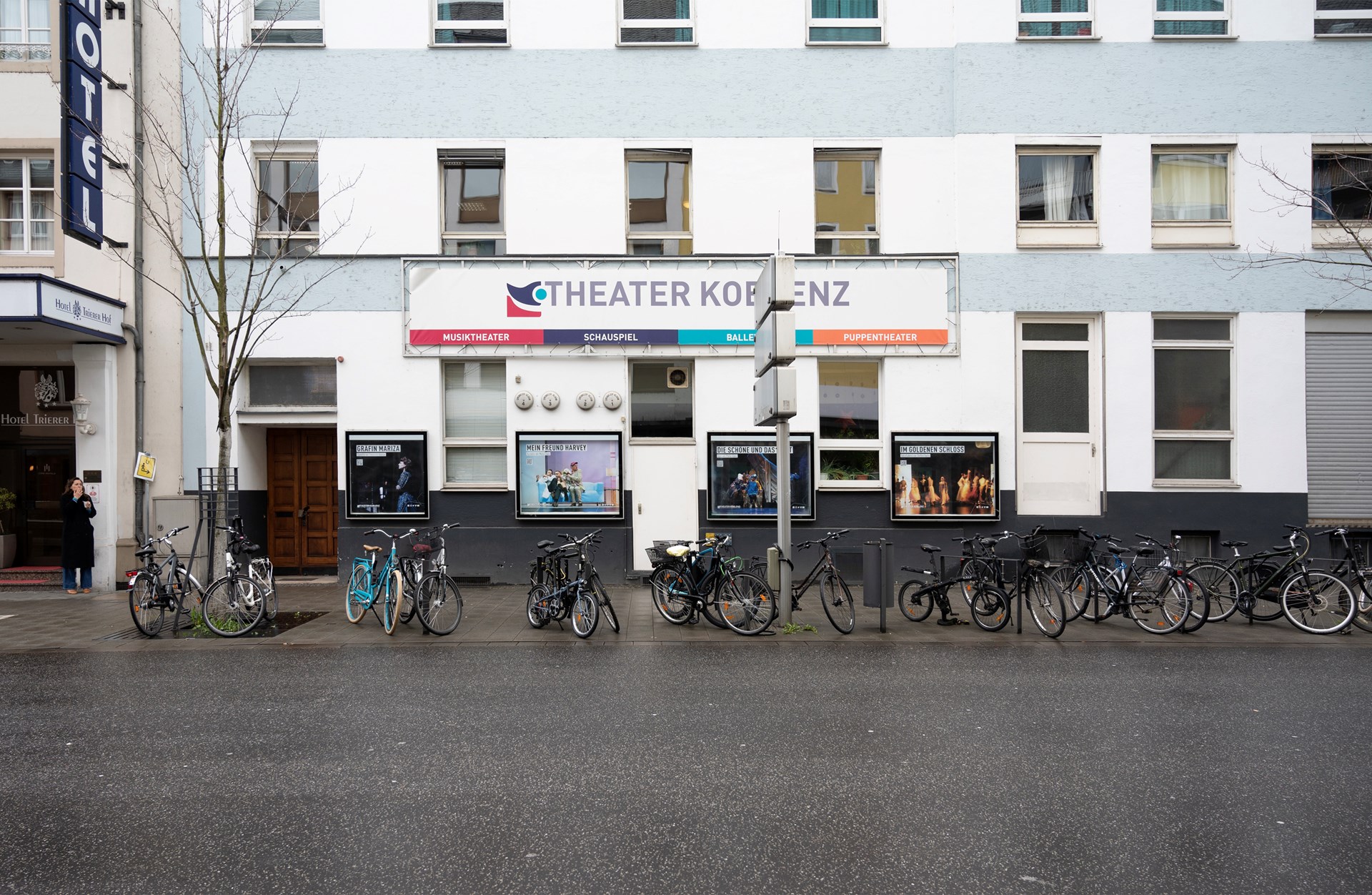
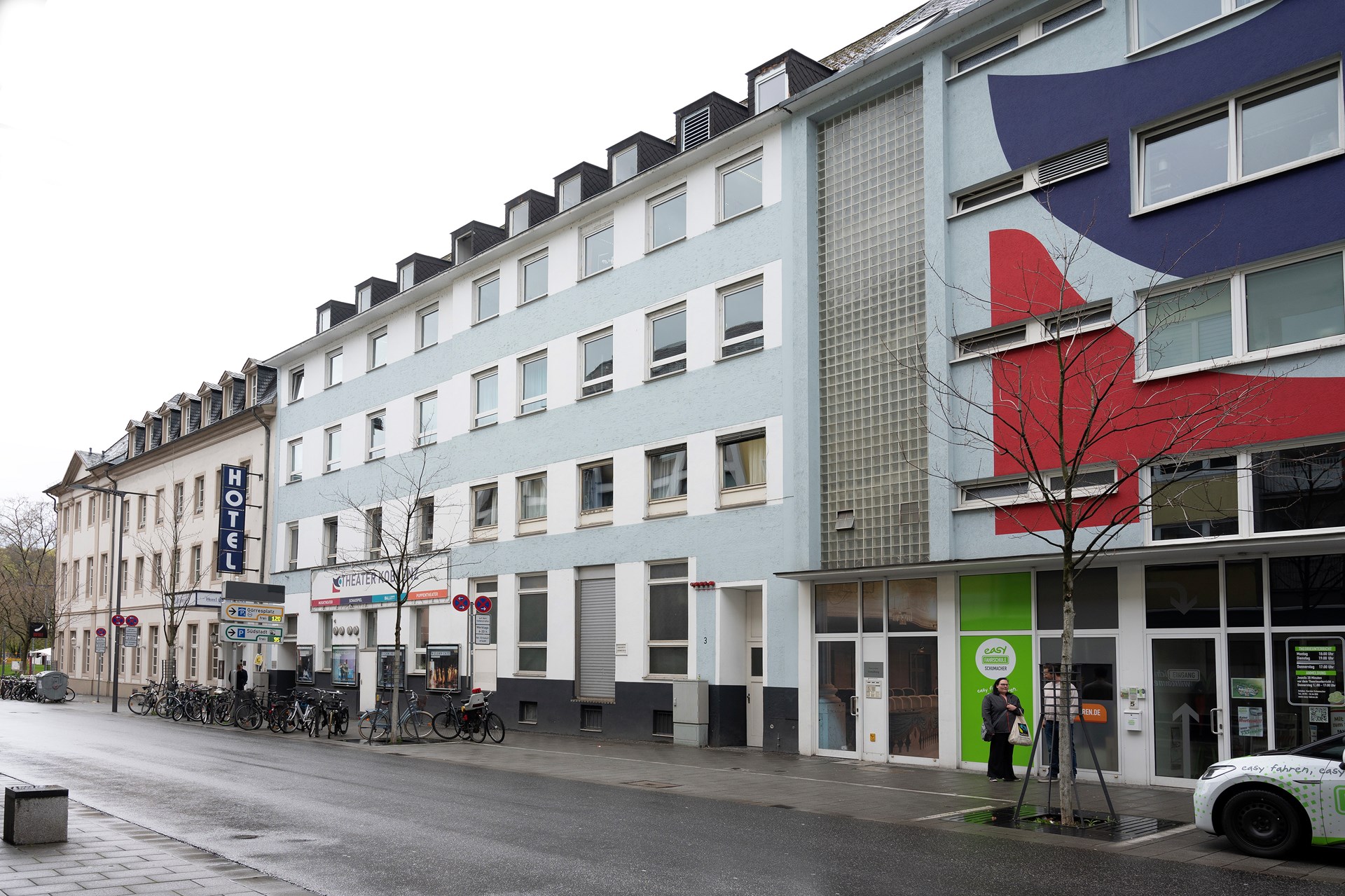
.jpg)
Credits
- Architect
- Founding partner in charge
- Director
- Director MVRDV Berlin
- Design team
- Visualisations
- Strategy & development
- Partners
- Project coordination:
- theapro GmbH
- Structural engineer:
- Laufs Engineering Design GmbH
- MEP:
- Büro Happold
- Cost calculation:
- W+W
- Building physics:
- Ingenieurbüro Bechert
- Media, stage light, and technical consultant:
- theapro GmbH
- Stage light consultant:
- Rose + Imming Ingenieur-Partnerschaft mbB
.jpg?width=900&quality=75)